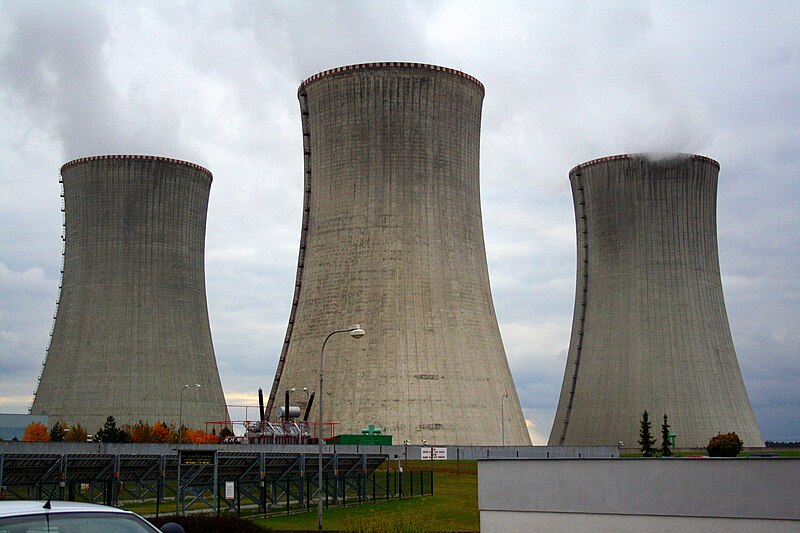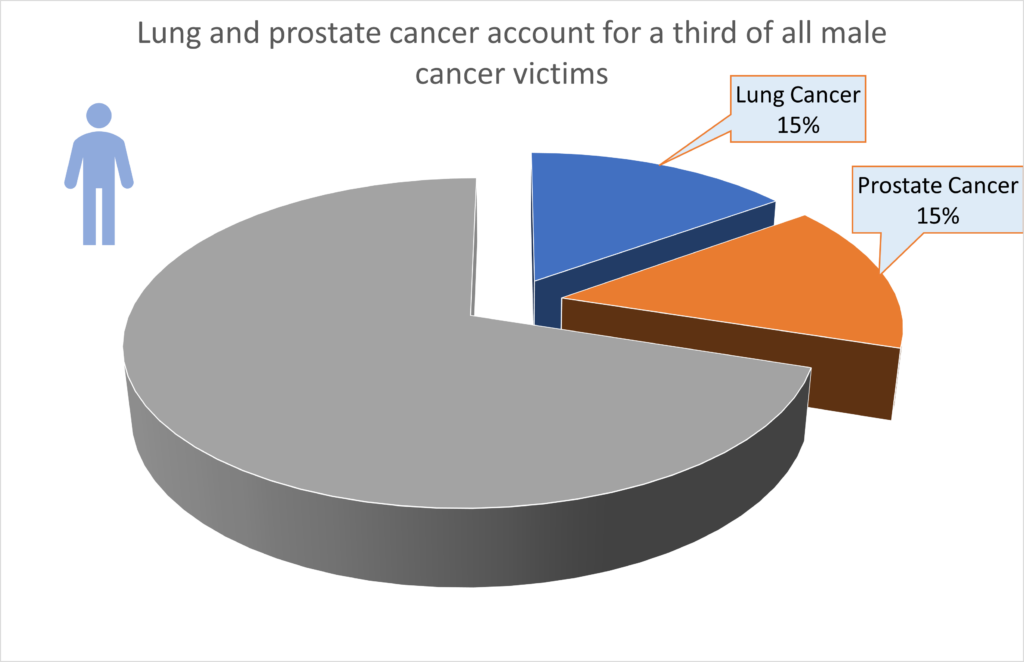Introduction
Cancer is a dangerous disease in which certain cells in our body grow in an uncontrolled way. It is one of the world’s most serious illnesses. Together with heart attacks, it kills more people than any other disease in the world.
The human body has billions of cells. They are tiny elements of living material. Cells always reproduce themselves. Normally our body controls this process. It tells cells to divide themselves when we need it and to stop when we don’t. Sometimes, however, cell growth gets out of control and the production of cells doesn’t stop.
These cells that produce new tissue are called tumours. They can be benign (good) tumours or malignant(bad) tumours. A benign tumour usually stays in the same area in which it starts growing. It is often harmless. A malignant tumour however is dangerous. It can grow and spread to healthy cells and destroy them. Cells from malignant tumours can also spread to other parts of the body and produce more tumours. These malignant tumours are the ones that cause cancer and may even lead to death. Sometimes they enter the blood and lymphatic system. When this happens, cancer metasizes.
Our body’s lymphatic system
Image: (modified version) File: Illu lymphatic system.jpg, CC BY 3.0,
via Wikimedia Commons
Types of Cancer
There are over a hundred different types of cancer. Although it can strike people of all ages, older people get cancer more often than younger ones. Cancer is not one single illness. It can attack all parts of the body and spread to other areas.
Among the most common types of cancer are:
- Bone cancer – most cases are caused by cancer somewhere else in the body
- Brain tumours – there are several different types, depending on the cells of your brain
- Breast cancer – the most common form of cancer in women around the world
- Bowel cancer – this form of cancer can be best treated if you detect it early
- Leukemia – blood cancer affects people of all ages groups
- Lung cancer – is one of the deadliest forms of cancer
- Prostate cancer – one of the most common forms of cancer that affect men over 50
- Skin Cancer – can be avoided if you protect yourself from the sun’s harmful rays.
Unlike infectious diseases like AIDS or the flu, cancer is not contagious – it does not spread from one person to another.
Symptoms
Doctors and scientists have found out that there are some symptoms that are typical of cancer. Victims feel pain, sometimes lose weight and become tired or they may feel a change in their skin.
Each form of cancer also has other special symptoms: Blood in your urine may be a signal of bladder or prostate cancer. Lumps in a woman’s breast may mean breast cancer. A cough that does not go away and stays for weeks or months may be the first warning signs of lung cancer.
Causes of Cancer
Scientists do not really know why cancer cells start to grow. They sometimes lose their ability to control their own growth. This is because DNA may be damaged. Doctors, however, have found out that there are many factors that cause cancer. Many forms of cancer are caused by our environment. For example, if you expose yourself to the sun’s rays without any protection for too long, chances of getting skin cancer will become higher.
Smoking cigarettes can cause lung cancer or other diseases over a certain time. Being in close contact with chemicals may also increase the risk of getting cancer.
Being exposed to radiation for too long may also cause cancer. This happened when the nuclear power plant at Chernobyl exploded in 1986. Cancer became more common in the region for years on.
Other types of cancer are not caused by our environment. They come from our genetic material. We inherit it from our parents or grandparents.

Cooling towers of a nuclear power plant. Higher levels of radiation may lead to more cancer cases.
Image : Frettie, CC BY 3.0, via Wikimedia Commons
Cancer Prevention
About 70% of all cancers are caused by environmental factors and our lifestyle. The easiest way of preventing cancer is to avoid certain dangers.
- Protect your skin when you are in the sunshine by using skin creams or lotion on your body.
- Do not smoke.
- Do not drink too much alcohol.
- Eat a lot of fresh fruits and vegetables.
- Go to the doctor regularly for medical checkups.
- Eat wholegrain breads or cereals.
Cancer Treatment
There is no real cure for cancer. But if you go to the doctor early enough it may be treated successfully.
About a hundred years ago people who developed cancer were certain to die. Today, medicine has made so much progress that about half of all cancer patients can be treated successfully depending on the form of cancer.
Surgery
If a cancer is only in one place doctors can remove tumours by surgery. Antibiotics and blood transfusions make cancer surgery more successful than in past times.
In many cases a pathologist examines cancer cells during an operation and then decides how much tissue must be removed. Very often, healthy tissue around the tumour is also taken away in order to make sure all cancer cells are removed.
Radiation
The discovery of X-rays has led to a treatment called radiotherapy. When surgery is too dangerous or risky radiotherapy is a good alternative. In this form of treatment X-rays or gamma rays are beamed directly at the tumour. Cancer cells are killed off and do not multiply any more.
Chemotherapy
If a cancer has already spread to other parts of the body or has invaded other organs doctors use chemotherapy. Chemicals are injected into your body or you take them orally. They then travel throughout your body and kill off cancer cells wherever they find them. Often, a combination of drugs is used because some drugs reduce the size of cancer tumours only for a short time.
This form of treatment can be very risky because the chemicals may destroy healthy stem cells if they are too strong.
Other forms
Recently , new forms of treatment have been discovered and tried out. Immunotherapy strengthens the immune system of the body by producing antibodies.
Gene therapy is a very new form of cancer treatment. New, healthy genes are inserted into the tumour to help fight the disease.
Whatever form of treatment is chosen some side effects always occur. Surgery, for example, may lead to the loss of an organ, like a woman’s breast that must be removed.
During radiotherapy or chemotherapy many cancer patients lose their hair, develop bad skin and become more tired. Other side effects include bleeding, infection, vomiting or diarrhea. Sometimes people who have been treated with cancer become infertile – they can’t have children any more.
Researchers and scientists have been working hard to find a cure for cancer. Governments around the world have been spending a lot of money over the past decades to find better ways of fighting this disease.

Radiotherapy for cancer
Image : Jakembradford, CC BY-SA 4.0,
via Wikimedia Commons
Global Facts
Here are some global facts about cancer.
- One in three of us will be diagnosed with cancer during our life
- Each year more than 7 million people around the world die of cancer.
- Cancer accounts for 13% of all deaths worldwide
- Lung cancer is the most common form of cancer (1.3 million deaths per year)
- Tobacco use is the greatest risk factor for cancer
- More than 70% of all cancer deaths occur in low and middle income counties.
New cancer cases per year

Breast Cancer

Cancer in males